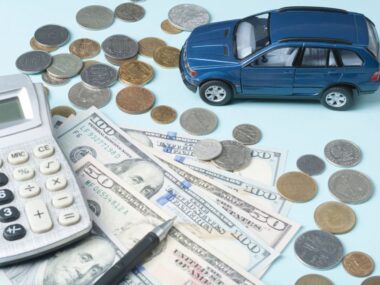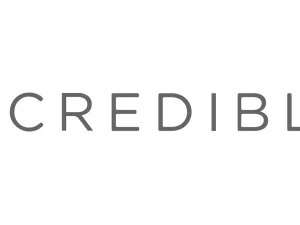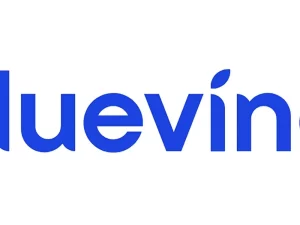Auto loans come in various forms, each with its own set of terms, interest rates, and repayment options. The specific type of auto loan you choose can significantly impact your overall cost and financial stability. Here are some common varieties of auto loan rates:
1. Fixed Interest Rate:
A fixed interest rate auto loan is one of the most prevalent and straightforward options available to borrowers. With this type of loan, the interest rate remains constant throughout the loan’s duration. This means that your monthly payments are predictable and don’t change, making it easier to budget and plan your finances. Fixed-rate auto loans are often favored for their stability and transparency. You know exactly how much you need to pay each month, and you can calculate the total interest you’ll pay over the life of the loan. They are available for various loan terms, such as 36 months, 48 months, or 60 months, allowing borrowers to choose a repayment schedule that suits their budget.
2. Variable or Adjustable Interest Rate:
Variable or adjustable interest rate auto loans are the opposite of fixed-rate loans. The interest rate on these loans can change over time based on fluctuations in the financial markets, specifically tied to an underlying benchmark rate. Typically, the initial interest rate for a variable-rate auto loan is lower than that of a fixed-rate loan, which can be appealing to borrowers seeking lower initial monthly payments. However, it’s essential to understand that the rate can increase or decrease during the loan term, potentially affecting your monthly payments. Lenders often cap the maximum interest rate increase (known as the rate cap), providing some protection against drastic rate hikes. Variable-rate loans can be more challenging to budget for since payments may change over time.
3. Simple Interest Rate:
Simple interest rate auto loans are structured in a way that calculates interest daily based on the outstanding loan balance. This means that as you make payments and reduce the principal amount, you’ll pay less in interest over time. Simple interest loans are a common choice for auto financing because they offer a degree of flexibility and can benefit borrowers who make additional payments or pay off the loan early. The key advantage of simple interest loans is that they reward borrowers for making extra payments or paying off their loans ahead of schedule. This reduces the overall interest paid and shortens the loan term. It’s important to note that simple interest loans are often used in conjunction with fixed interest rates.
4. Precomputed Interest Rate:
Precomputed interest rate auto loans are structured differently from simple interest loans. With precomputed interest, the lender calculates the total interest amount for the entire loan term and adds it to the loan amount upfront. This means your monthly payments go toward repaying both the principal amount and the precomputed interest. While precomputed interest loans provide lenders with a guaranteed interest income, they can be less advantageous for borrowers who intend to pay off their loans early. If you pay off the loan ahead of schedule, you may not receive as much interest savings compared to a simple interest loan. These loans are somewhat less common in the auto financing industry.
5. Subsidized Interest Rate:
Subsidized interest rate auto loans are often offered as part of special financing deals, particularly by manufacturers or dealerships. These rates are typically lower than market rates and are designed to incentivize vehicle purchases. Subsidized interest rates can make financing more affordable, but they often come with specific terms and conditions. For example, you may need to meet certain credit requirements or agree to specific loan terms to qualify for these advantageous rates. Manufacturers and dealerships may use subsidized interest rates as a marketing tool to attract customers to their vehicles.
6. Prime vs. Subprime Rate:
Auto loan interest rates vary based on the borrower’s creditworthiness, and lenders often categorize borrowers into two broad groups: prime and subprime.
– Prime Rate: Borrowers with excellent credit scores typically qualify for prime interest rates. These rates are the most favorable, offering the lowest interest charges. If you have a strong credit history and high credit score, you’re more likely to be eligible for prime rates.
– Subprime Rate: Subprime interest rates are higher and apply to borrowers with lower credit scores or less robust credit histories. Lenders charge higher rates for subprime borrowers to compensate for the increased risk of default. Subprime rates can vary widely depending on the lender and the borrower’s credit profile.
7. Promotional or 0% APR:
Occasionally, automakers and dealerships run promotions where they offer 0% APR (Annual Percentage Rate) financing on specific vehicle models. These promotions can be highly attractive because they mean no interest is charged on the loan. However, 0% APR financing typically comes with stringent eligibility requirements. Borrowers usually need to have excellent credit scores to qualify, and the loan terms may be relatively short, such as 36 months. This type of financing can be an excellent way to save on interest costs if you meet the criteria and plan to keep the vehicle for the entire loan term.
8. Balloon Payment Loans:
Balloon payment auto loans offer lower monthly payments compared to traditional loans but come with a significant lump-sum payment, known as the balloon payment, due at the end of the loan term. These loans can be appealing to borrowers who want to minimize their monthly financial obligations. The key feature of balloon payment loans is that they defer a substantial portion of the principal balance to the end of the loan. While this can reduce monthly payments, it also means that a large lump sum must be paid when the loan matures. Borrowers often have options when the balloon payment becomes due, such as refinancing the remaining balance, selling the vehicle, or paying the balloon amount in full.
9. Secured vs. Unsecured Loans:
Most auto loans are secured loans, which means that the vehicle being financed serves as collateral for the loan. In the event of a default, the lender can repossess the vehicle to recover the outstanding balance. Secured loans typically have lower interest rates because the collateral reduces the lender’s risk.
Unsecured auto loans, on the other hand, do not require collateral. Instead, they are based solely on the borrower’s creditworthiness. Unsecured loans are less common for auto financing and usually come with higher interest rates because lenders assume a higher level of risk when no collateral is involved.
These are the common varieties of auto loan rates that borrowers encounter when seeking financing for a vehicle purchase. The choice between these types of rates should be based on your financial goals, credit profile, risk tolerance, and ability to manage potential fluctuations in interest rates. Additionally, it’s crucial to carefully review the terms and conditions of any auto loan offer and shop around to find the best financing option for your specific situation.










